White Fawn Female English Bulldog Blue English Bulldog
Anyone who has owned or spent any time in the presence of a bulldog of any type will know just how loveable, soft, docile, kind, and courageous they can be.
When you look back at this breed's history, it's hard to equate the dogs we know and love with the muscle-bound fighting machines they once were.
The widely accepted version of their origins lies in 13th century England during the reign of King John, a time when brutal 'bloodsports' involving animals were a popular pastime.
Special breeds of dogs were selected, with the bulldog being prized for its powerful jaws, muscular frame, and unwavering tenacity.
Packs of bulldogs were sent into an arena to fight bulls (and sometimes other large animals) with bets placed on the outcome. You can only imagine the sickening results.
Thankfully, attitudes towards this gruesome spectacle changed, and bloodsports of this type began to change, and they were banned in the late 1800s.
Sadly, however, the practice was driven underground, with other breeds, such as the pitbull and mastiff, being used instead.
This would have signaled the end of the English Bulldog, but a handful of admirers of the breed refused to let this happen.
And, as aggression was no longer needed, a gentler nature emerged through selective breeding, providing us with the big softies we know today – still solid muscle, but with bags of character and charm, and a whole load of affection.
They are legendary for their resoluteness, which is why they became a symbol of British tenacity and spirit, especially throughout World War II.
The American Kennel Club (AKC), The Kennel Club (in the UK), and the United Kennel Club are responsible for keeping breeding records and maintaining breed standards.
This includes all of the new variations stemming from the original 'Olde English Bulldogge,' the classic example of the breed, setting the breed standard for all bulldogs to follow.
How Do We Get 'Blue' English Bulldogs?
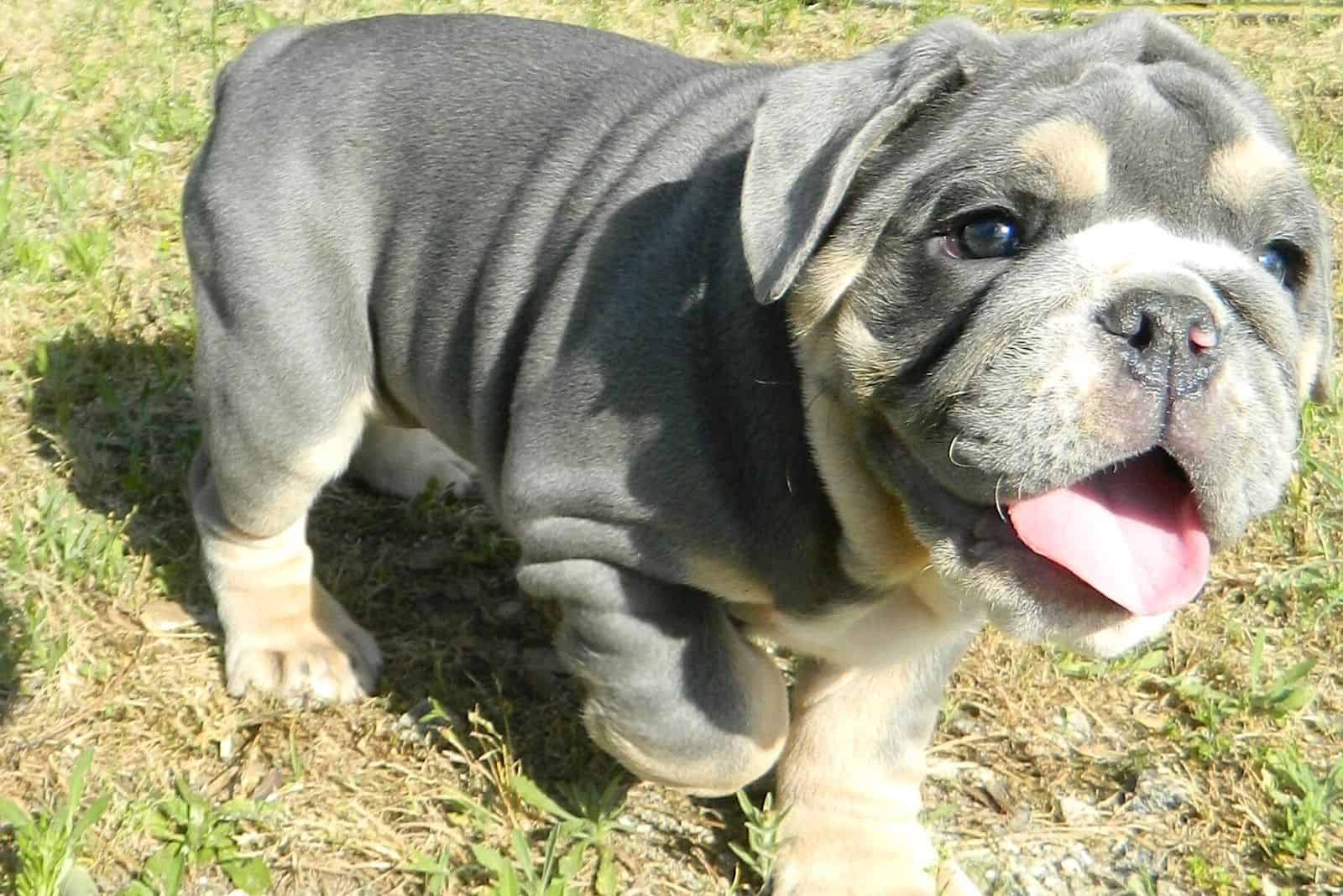
Here we enter the confusing realm of DNA and genetics! The classic bulldog colors are white, fawn, red, piebald, and brindle.
However, in recent times, there has been a surge of interest in rare colors, resulting in English Bulldogs that are chocolate, black, or blue.
These rarer colors have led to seriously high prices for English Bulldog puppies, especially for those that are 'tri color.'
Breeders have produced black tri, chocolate tri, and blue tri English Bulldogs, which have become highly sought after, a fact that is reflected in the pricing.
The 'blue' coat has been achieved, as you'd expect, through selective breeding. Each English Bulldog carries certain colors in its genes, including the rare ones.
Some carry all three rare colors (chocolate, black, and blue) and can produce pups of any of these colors if bred with the right partner.
As interest in exotic and rare colors increases, breeders are seeking new ways of satisfying this trend, producing dogs such as the lilac tri, merle, and blue fawn English Bulldog.
The fashion is also for miniature dogs, driven by celebrities who chose a specialist breeder called Shrinkabulls.
While they are undoubtedly cute, it does raise questions among some people concerning the ethics of the practice, given the health conditions these dogs encounter.
Looking After Your Blue English Bulldog
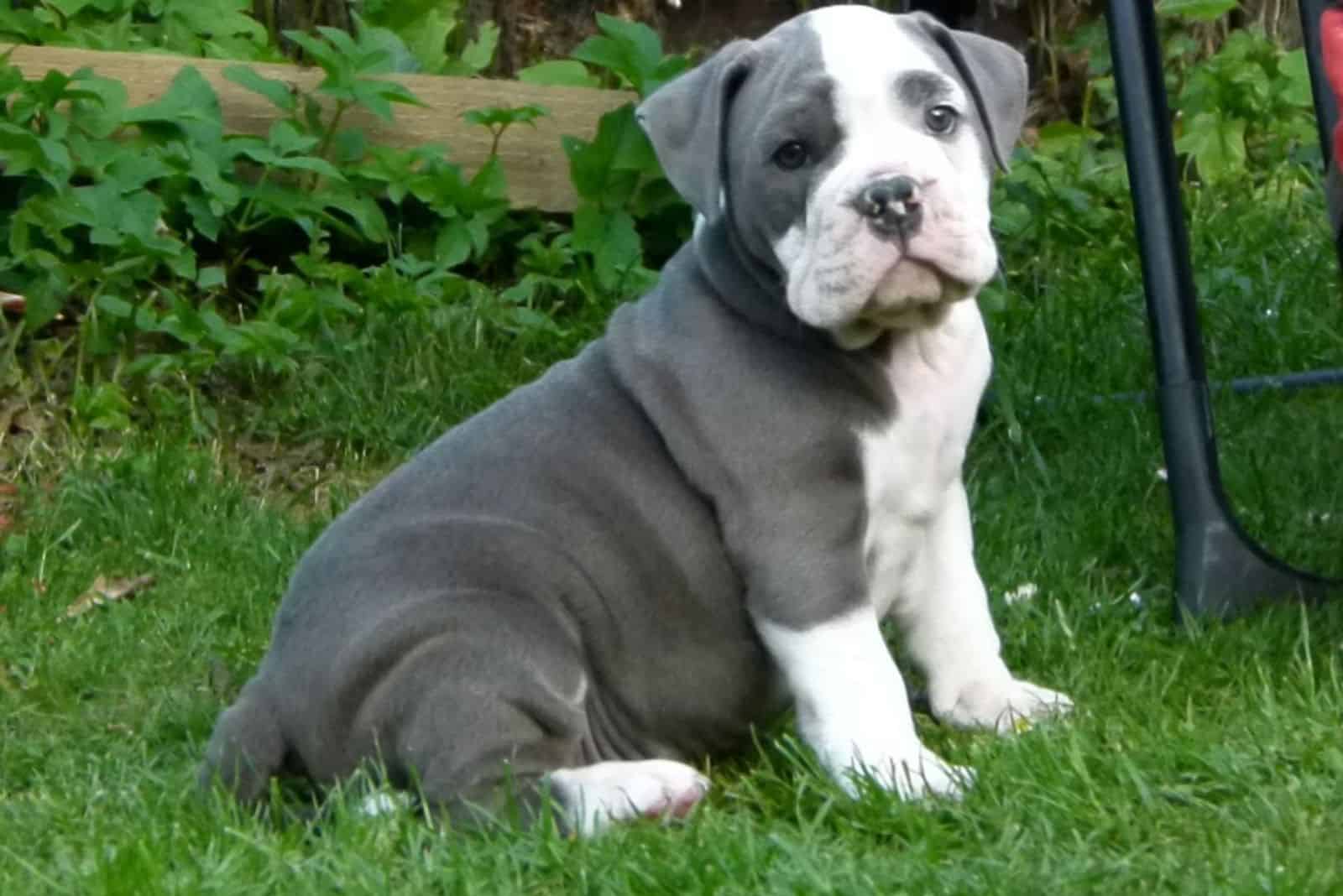
We've taken a brief look at their history, now let's find out how to care for them, starting with this important fact: this breed is considered high maintenance.
As adorable as blue English Bulldog puppies might be, before you take the plunge and rush out to buy one, you should take a moment to find out more about this breed, the challenges they present, and the health issues they face.
As with all brachycephalic dog breeds (those with flat faces and short noses) such as Frenchies, pugs, bullmastiffs, and so on, English Bulldogs are at risk of BOAS (Brachycephalic Obstructive Airway Syndrome).
The process of selective breeding has led to a narrow and restricted nasal passage, which often results in breathing difficulties.
This problem, along with the shorter snout, means that they are unable to cool themselves down after exertion or during the hotter months.
Dogs with longer muzzles are able to pant, drawing air over the tongue and cooling it (as they are unable to sweat).
However, Brachycephalic dogs don't have this option and can overheat quickly, which sometimes proves fatal.
Because of their narrow airways, they often struggle to breathe, which means that they are not getting enough oxygen into their bloodstream. This puts more strain on the heart, leading to cardiac issues later in life.
Something to be aware of is neurological problems (affecting the brain) that can also be an issue with brachycephalic breeds.
Those characteristic folds and flaps on your beloved blue English Bulldog are just another reason why you love them. But they can harbor dirt and bacteria, leading to infection if not kept clean and dry.
Then there's the eyes and teeth. A shortened face means that teeth are cramped and often overlap, which can contribute to decay or gum disease.
Their tear film sometimes doesn't cover the whole eye, which can result in injury, especially with the eyes being so prominent.
Bulldogs are more prone to allergies than many other breeds. These usually take the form of food intolerance/allergy and skin allergies.
Finally, as with most purebred dogs, there are problems when it comes to mating and giving birth. The vast majority of English Bulldogs are born via C-section.
This is a risky procedure in itself, but if they were left to give birth naturally, there is a high probability of a pup becoming lodged in the mother's birth canal, which is potentially fatal to both.
A Care Routine For Your Blue English Bulldog
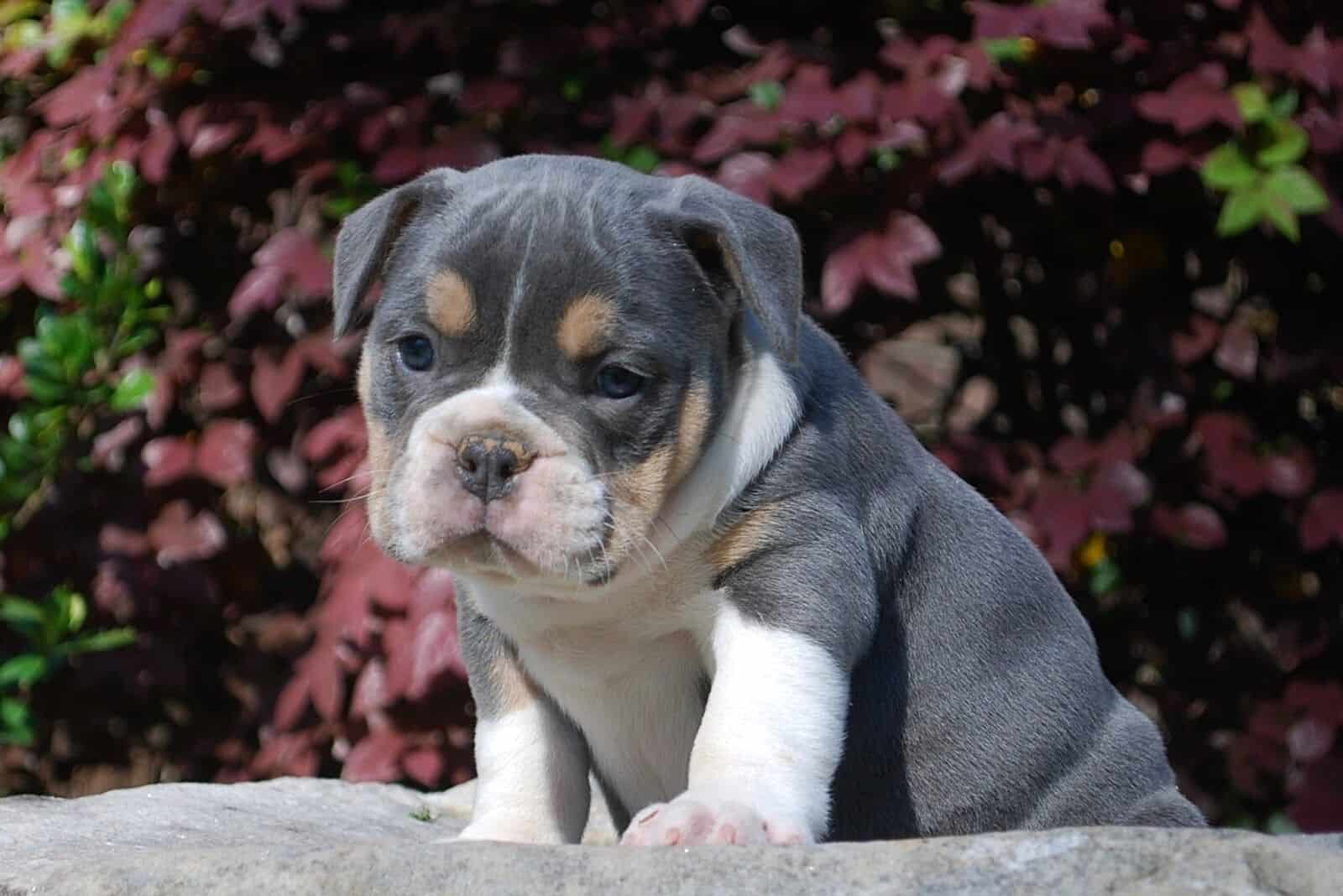
While the problems and dangers are clear, if you are prepared to meet the challenge and look after your dog correctly, then you'll be rewarded with a lifetime of love and loyalty.
These loveable pooches are famous for being 'family' pets, forming strong bonds with children soon after reaching their new homes.
So, once you've made the decision to contact some English Bulldog breeders, you'll need some advice on how to care for your new arrival.
Although they are high maintenance in relation to their health, when it comes to daily care, they really aren't a lot of work. But by looking after them well, you will help to reduce the risk of health problems later.
Exercise
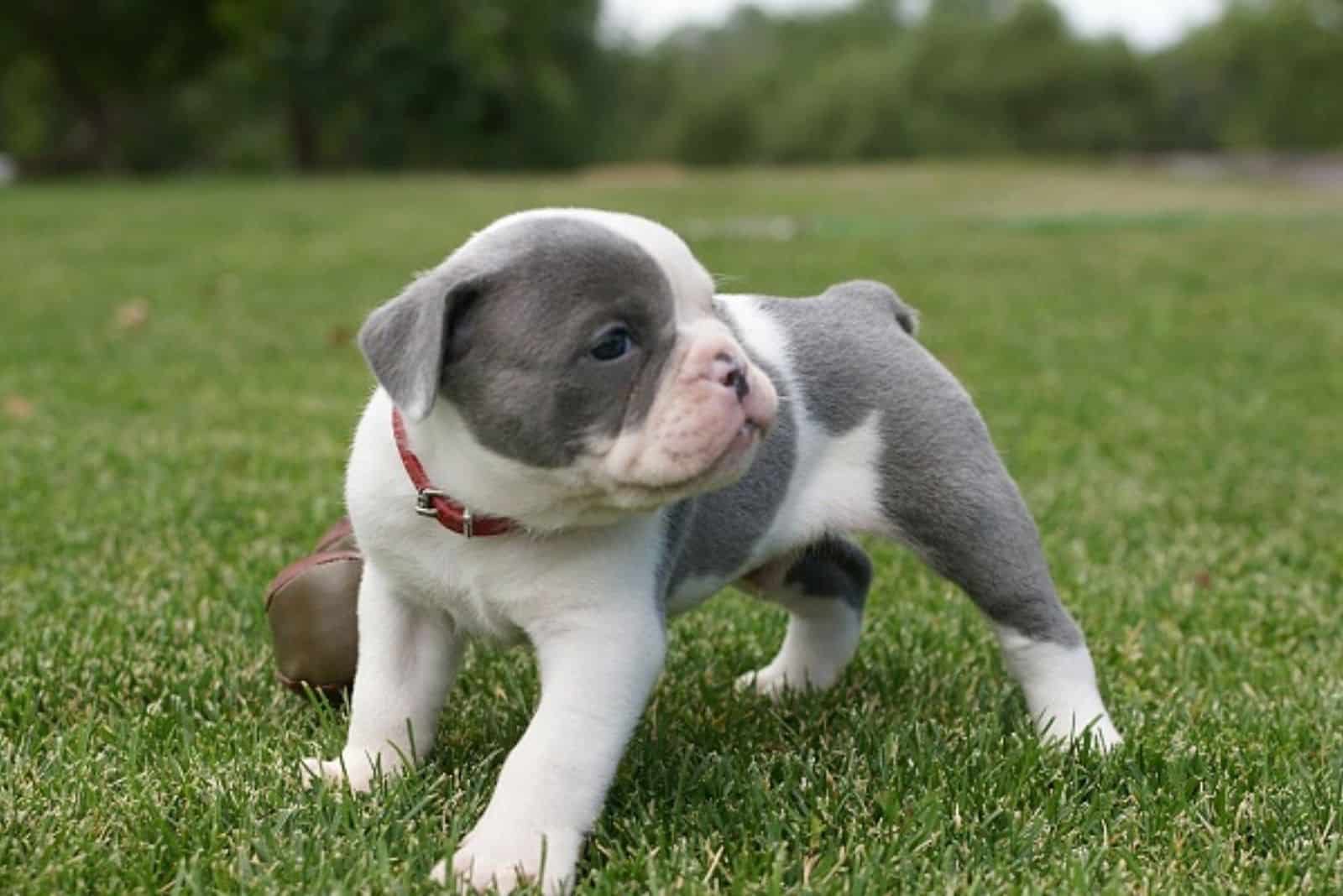
This one's fairly easy! Generally speaking, this breed doesn't need as much exercise as others, though clearly younger dogs will have more energy.
A good twenty minutes of walking or playing games will completely tire them out. This makes them a good choice for those living in apartments or who don't have large backyards or gardens.
Take care, with both dogs and puppies, not to let them get too hot, because of the reasons given above. Exercise time should be taken at cooler times of day, either early morning or later in the day.
Grooming Regime
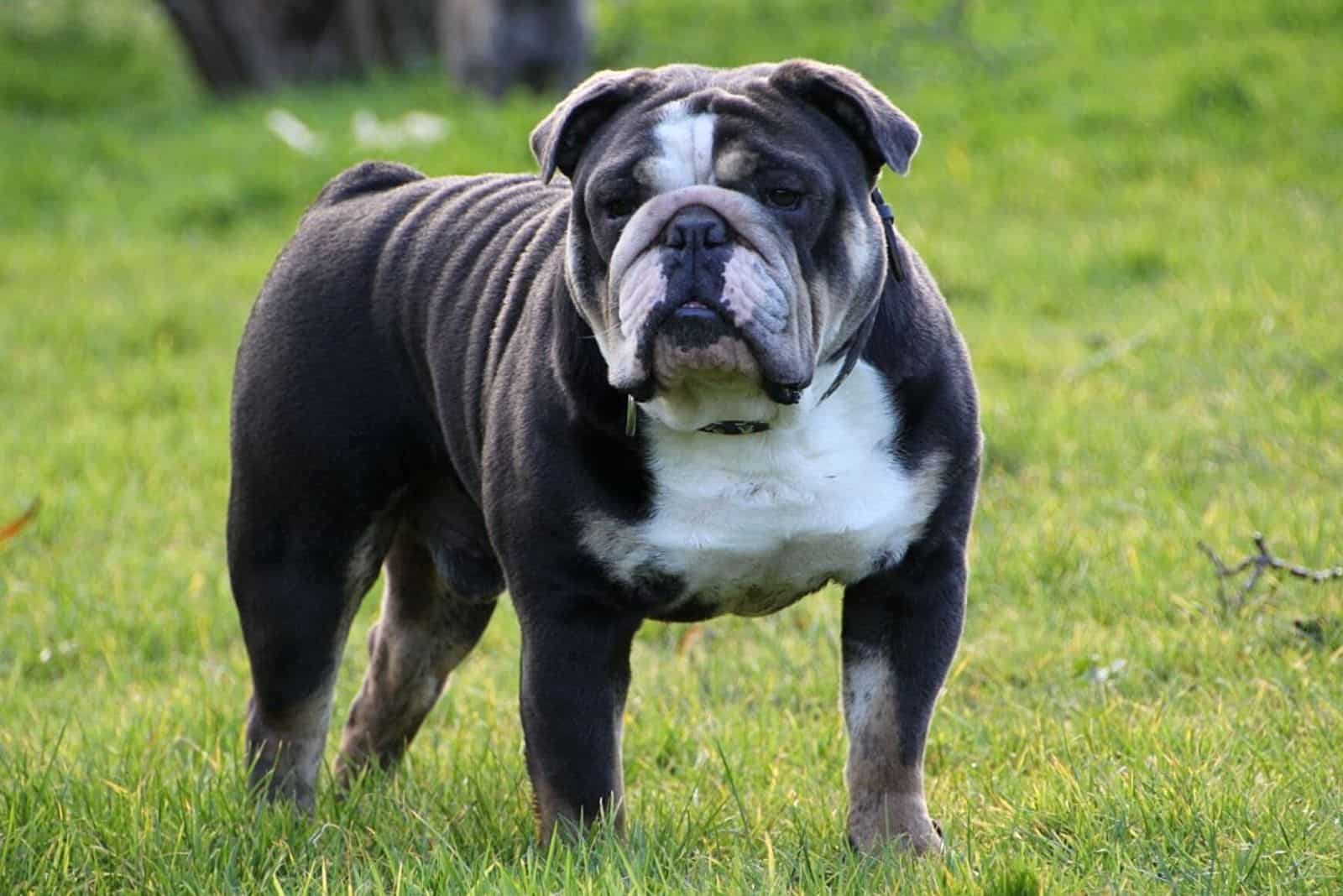
All dogs need brushing at least once or twice a week, and this breed is no different. Brushing removes dead skin and hair (though English Bulldogs don't shed much, being short-haired) and helps to keep the coat healthy.
During this process, you can take the opportunity to check them over for problems such as lumps.
Bulldogs are particularly susceptible to lymphoma, blood-borne cancer that affects white blood cells. Catching any tumors in the early stages offers the best chance of treatment and recovery.
Bathing is an essential part of caring for your dog. Not only does this help them smell fresh, but it gets rid of dirt, bacteria, and parasites.
You should consider investing in a special doggie shampoo that suits your pooch.
While most people use a towel, some prefer to blow-dry their dogs. Be careful here, as using a hairdryer can be tricky.
It's difficult to judge the heat, raising the possibility of scorching their skin. To help with this problem, there are doggie dryers on the market that are specially designed for the job!
Aside from bathing, you should regularly wipe in between the folds of their skin to eliminate bacteria that could cause infection.
You can use wet wipes, but never use ones that contain harsh chemicals or soaps, only water-based wipes. Alternatively, wipe them down with a clean, damp cloth (or shampoo or germicidal wipes recommended by your vet).
This process removes food (English Bulldogs are not the cleanest eaters!) and dirt that accumulates in the folds that can lead to bacterial infections such as dermatitis. Be gentle and wipe carefully so that you don't irritate the skin. Be sure to dry the folds with a clean, dry cloth afterward.
It's okay to use a little baby powder or grooming powder to help keep the folds dry.
Then give them a reward for being so good!
Dental Hygiene

As mentioned above, this breed can experience problems with their teeth due to them being 'overcrowded' in the mouth.
Therefore, keeping them clean is vital to limiting the chances of decay. Brushing their teeth is the best option, but some of our doggie friends aren't always as cooperative as they should be!
If you can coax them into allowing you to clean their teeth, always be prepared and use the right equipment.
Dog toothbrushes are available, but a kid's one should do the trick as they are softer and smaller. Use a toothpaste specifically designed for dogs, and never a 'human' one.
Get them used to it by allowing them to taste it first, then rub a tiny amount along their gums.
Once they are used to the flavor, try a small amount of brushing and gradually increase this to two or three sessions a week.
This will keep their breath fresh (which is much more pleasant for you!), reduce tartar buildup, and keep their teeth strong, bright, and white.
Other Issues To Watch Out For
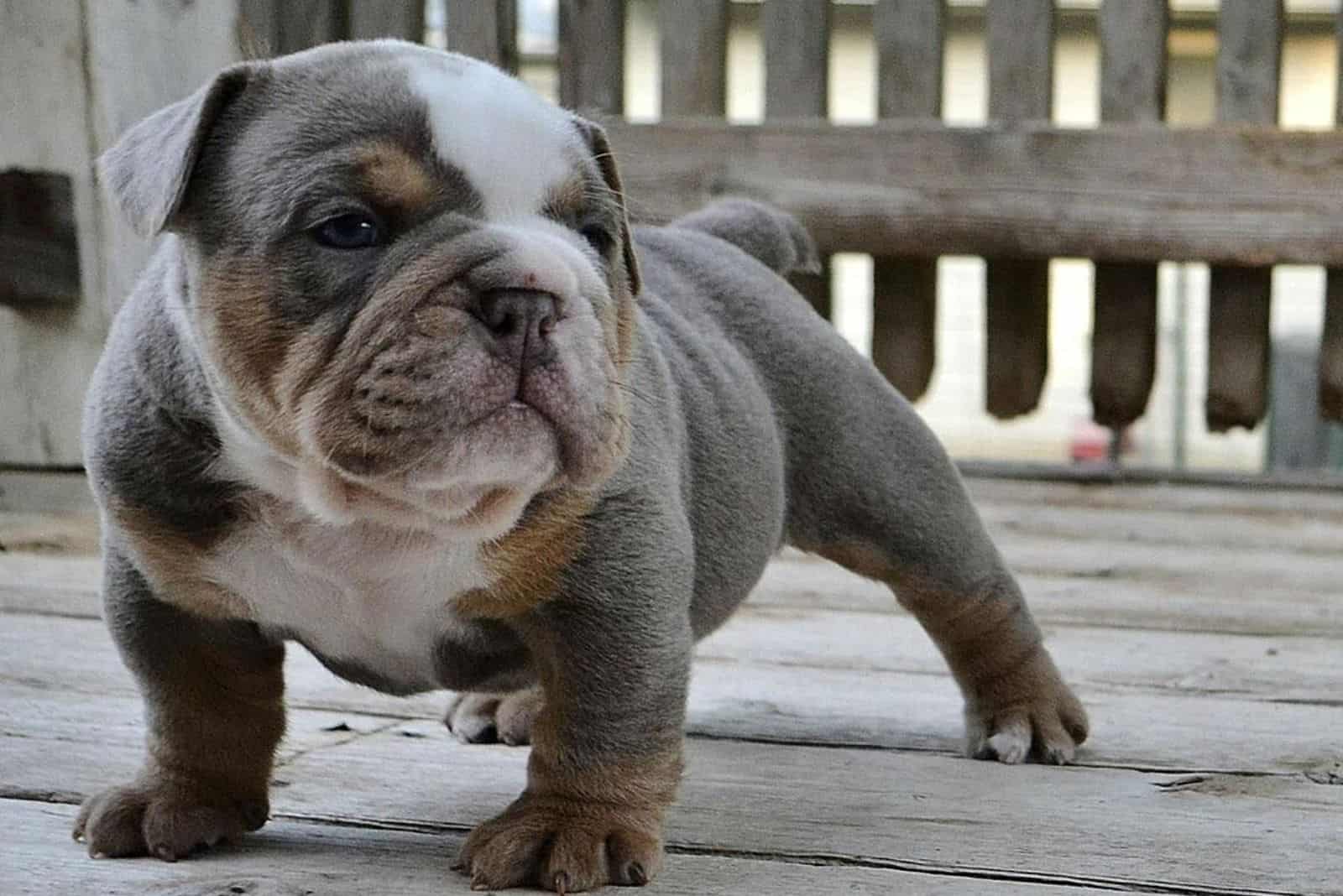
Though most blue English Bulldogs live healthy lives, you need to be aware of potential health problems they may face, especially later in life.
Selective breeding provides us with the quirks and characteristics we love. However, it also brings a host of genetic conditions that plague particular breeds.
As we learned, brachycephalism is one of these problems, resulting in breathing difficulties and overheating.
Obesity is a common health issue in most breeds, but with their 'smooshed' faces, saggy wrinkles, and big blue eyes, these dogs are often too adorable to refuse when they beg for a tasty treat!
Too many unhealthy treats, especially later in life, could cause them to pile on the pounds.
Try to counter this by keeping them active and feeding them only high-quality dog food. Limit treats to special occasions (yes, it will be hard!) or replace them with healthy versions.
A healthy adult male (one-year-old or more) English Bulldog should weigh between 52–55 pounds, whereas a female should weigh between 48–50 pounds. It's a good idea to weigh them now and then to keep track of any changes.
In addition to weight gain, you should watch for any signs of joint or bone disease. They may develop a limp or be reluctant to climb stairs.
They might lick at a joint constantly or wince when touched. They could also become irritable or start lagging behind when out walking.
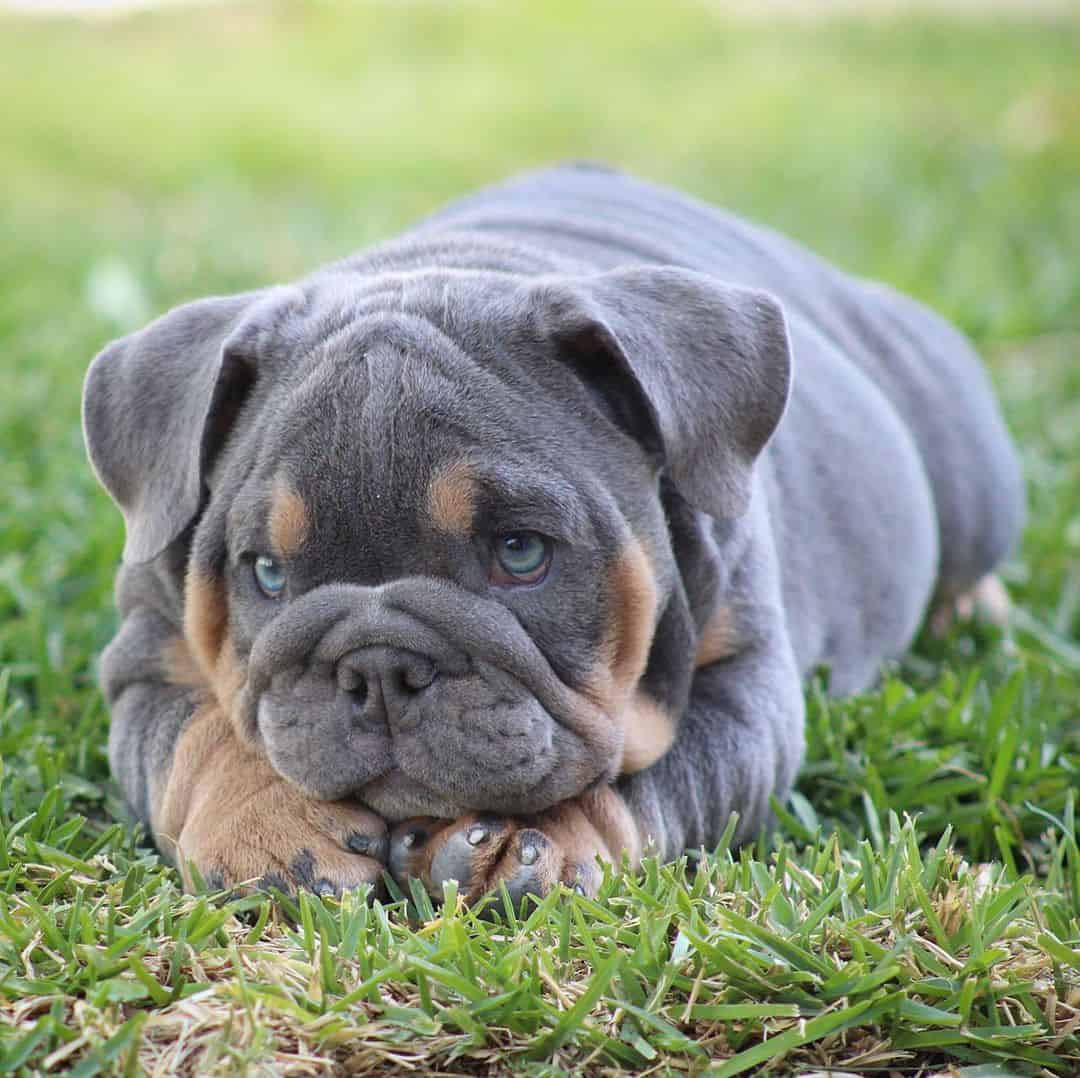
Photo from:@bully_famous
If you have any suspicions, book them in to be checked over by a veterinarian, who will look for degenerative joint disease (DJD) or arthritis.
Hip dysplasia is a common problem that affects many dog breeds and is something that needs addressing as soon as possible.
Unfortunately, heart disease and thyroid problems are two serious issues that frequently affect bulldogs due to their genetic makeup.
Unexplained fluctuations in weight, fatigue, excessive shedding, a dry cough, fainting — any combination of these symptoms are a sign that something is wrong, so get it checked out!
Keep an eye on, well, their eyes. Due to their protruding eyes, the third eyelid sometimes becomes inflamed and prolapses, causing a condition known as cherry eye.
This is usually treated with eye drops or antibiotics, but if these are not successful, then surgery will be required.
Final Notes
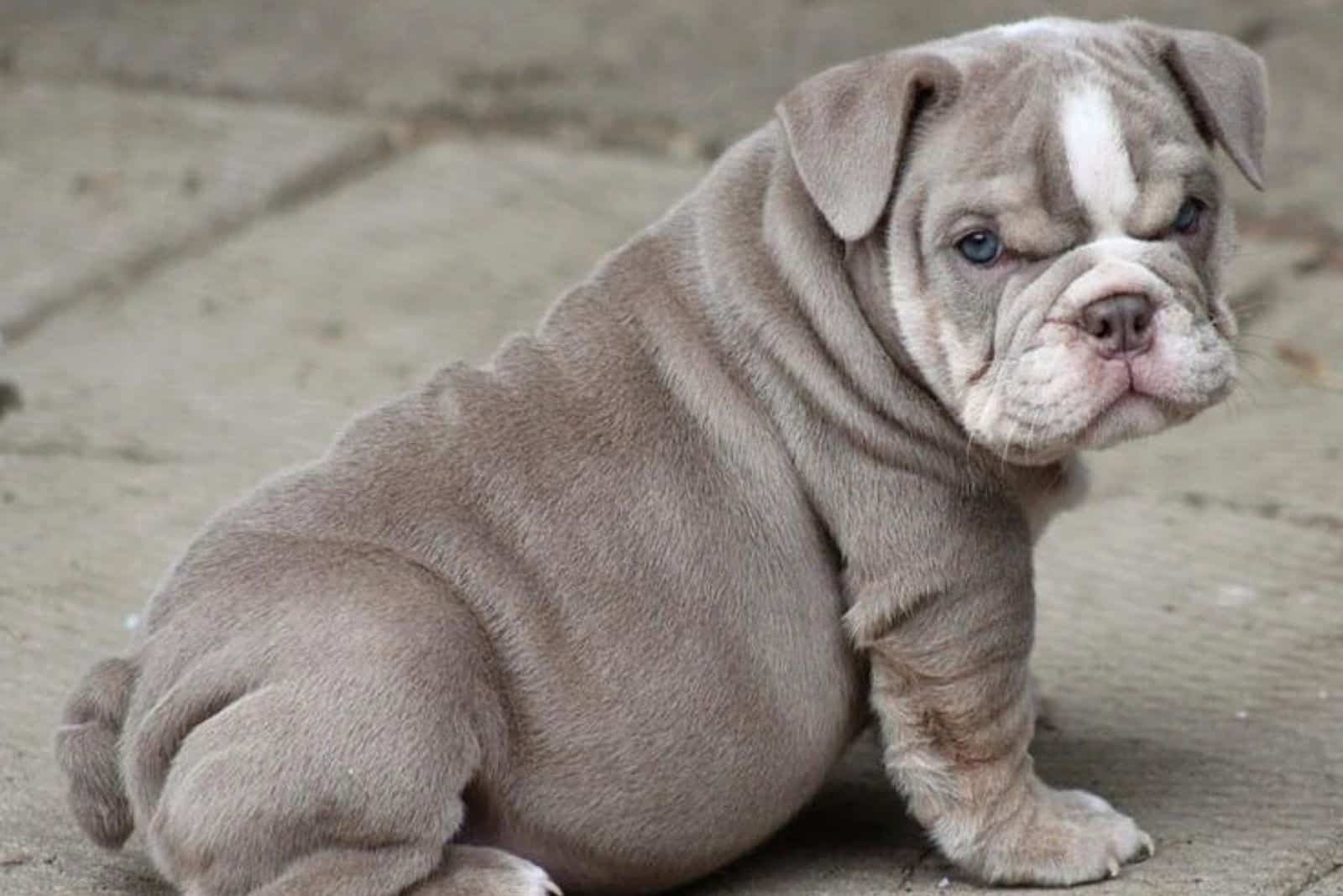
So you've reached this far, and you're still determined to head out to find that sign that says 'Blue English Bulldog Puppies For Sale'!
And who can blame you? They are unbelievably cute, after all, and they make excellent companions. Be sure to approach a reputable breeder and never be tempted to fall for an offer that seems too good to be true.
They almost always are! It could be that the breeder realizes that the pup in question has major health complications and needs to get rid of the animal as soon as possible.
You'll need to set aside a good amount of cash too. At current prices, these pooches are selling from $2,500 up to $12,000 and beyond.
And the costs don't end there. You'd be wise to invest in a pet insurance scheme, but be aware that this still won't cover all medical expenses.
Many breeders will sell you the pups simply as a pet, which is usual, although good breeders will advise that their stock can be used for starting your own 'stud service.'
Having seen the prices that they command, you may be tempted!
This, of course, is your decision, but running a bulldog stud is not something to be taken lightly. Breeding is notoriously difficult for these dogs and often can't be achieved naturally. Likewise, birth is more often than not performed via C-section.
In the end, there's no doubt you'll love that beautiful little bundle, and, despite the financial cost, the stress, the sleepless nights, and the tears, you will gain so much from their company, their devotion, and loyalty.
Be sure to follow a good routine of exercise, good food, cleaning, and grooming. Keep a careful eye out for those problems that might 'dog' them and get them the medical attention they need and deserve.
But above all, make sure you enjoy each and every minute that they are part of your family.
Read Next: English Bulldog Breeders In The UK: PupVine's Best 5 Picks!
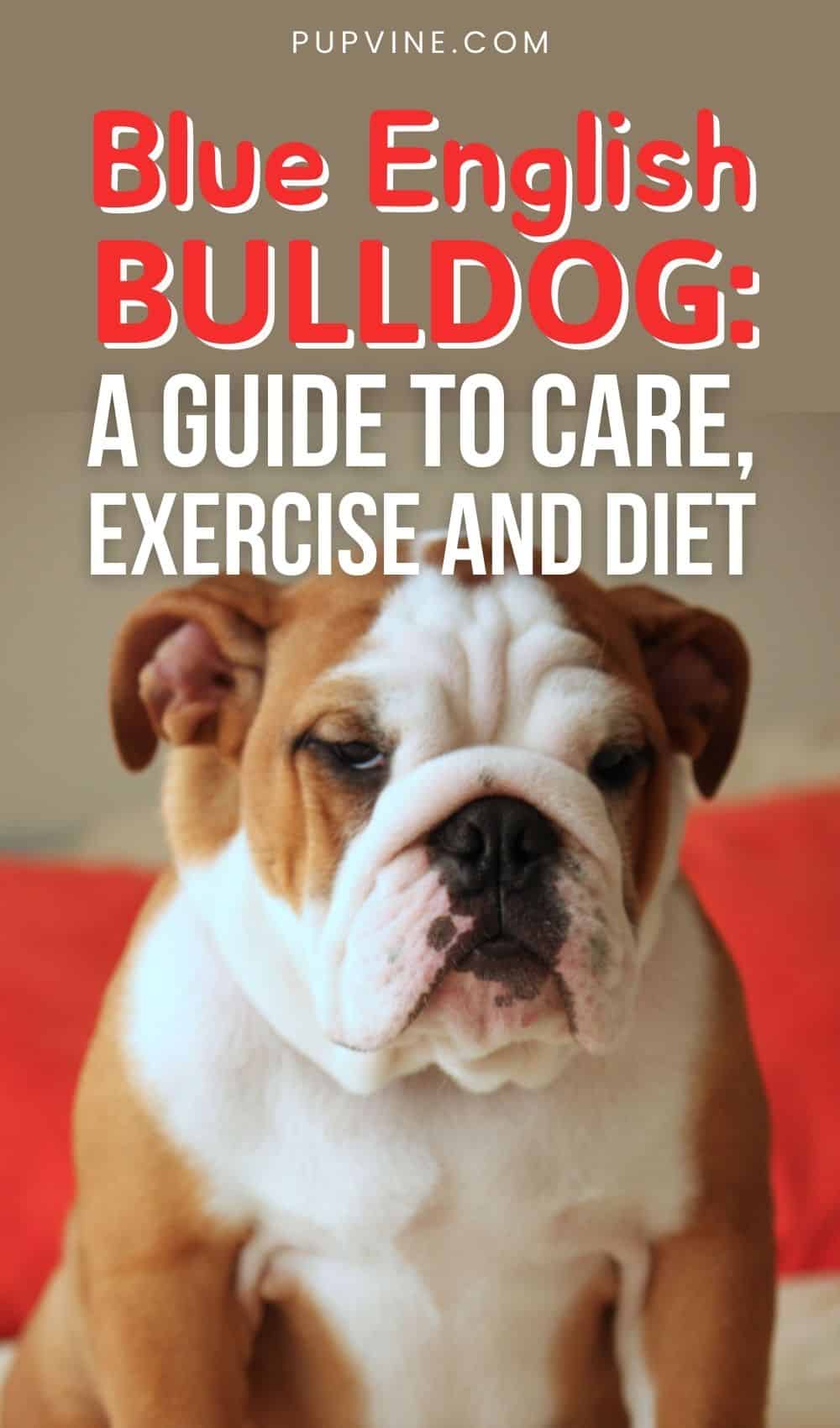
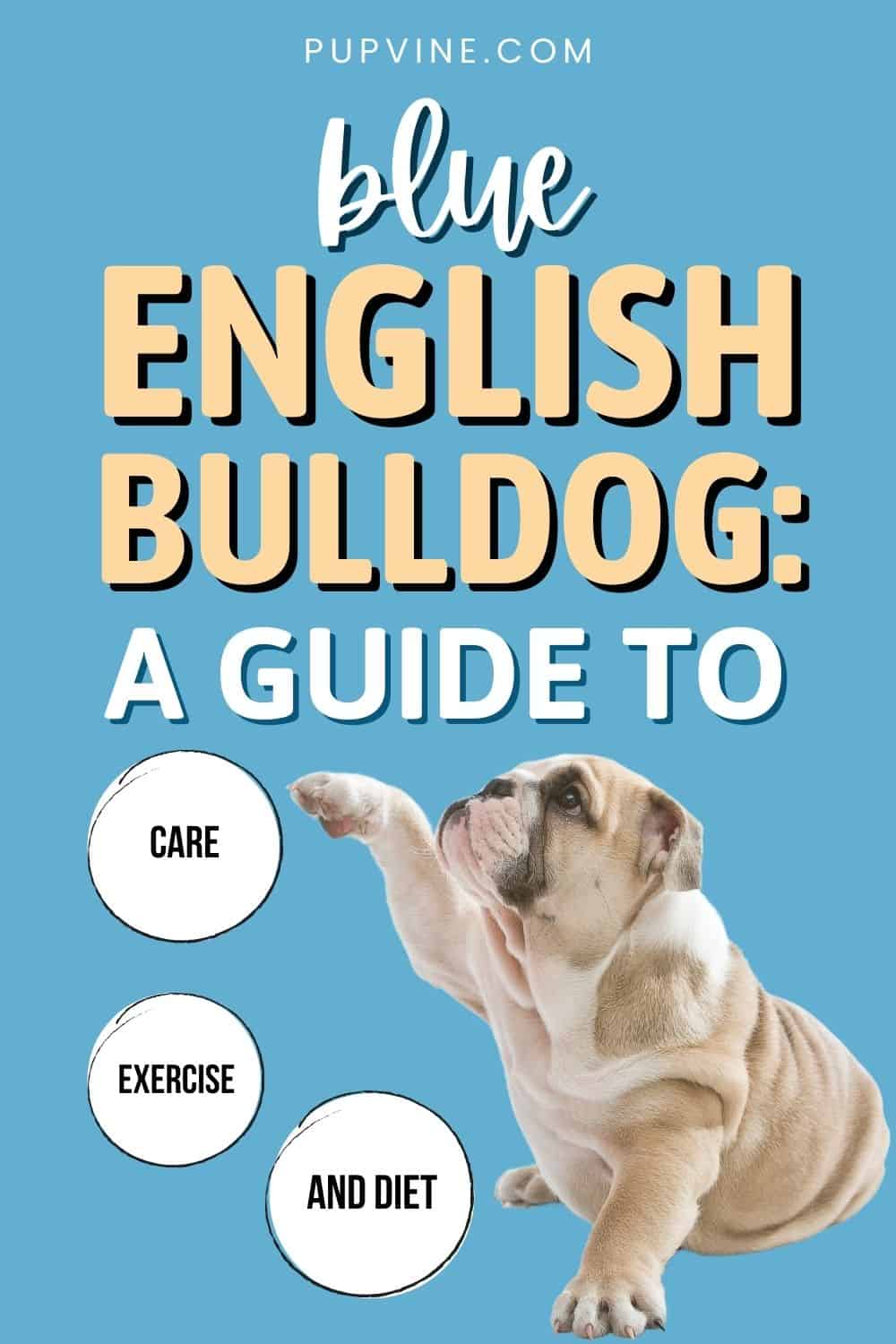
Source: https://www.pupvine.com/blue-english-bulldog/
0 Response to "White Fawn Female English Bulldog Blue English Bulldog"
Post a Comment